How To Plan For Retirement In Canada?
Key Takeaways:
- There are several retirement savings options in Canada, including RRSPs, TFSAs, and RPPs. It’s important to understand the tax implications and contribution limits of each option in order to maximize savings.
- Maximizing retirement savings requires budgeting for retirement, investing wisely, and taking advantage of employer matching programs. Consistently reviewing and adjusting your retirement plan with the help of a financial advisor is also important.
- Retirement income sources in Canada include government benefits like CPP/OAS, company pensions, and personal savings. Estate planning, such as creating a will and establishing powers of attorney, is also crucial for a successful retirement.
Are you worried about planning for your retirement in Canada? As you prepare for your golden years, understanding the retirement landscape here is essential. You can set yourself up for success with the right strategies and knowledge. In this blog, we’ll cover how to plan for retirement in Canada.
Understanding Retirement Savings Options in Canada
Gain insight into retirement savings in Canada. RRSPs, TFSAs, and RPPs are options. Learn more about them for a more detailed understanding of the retirement saving options in Canada.
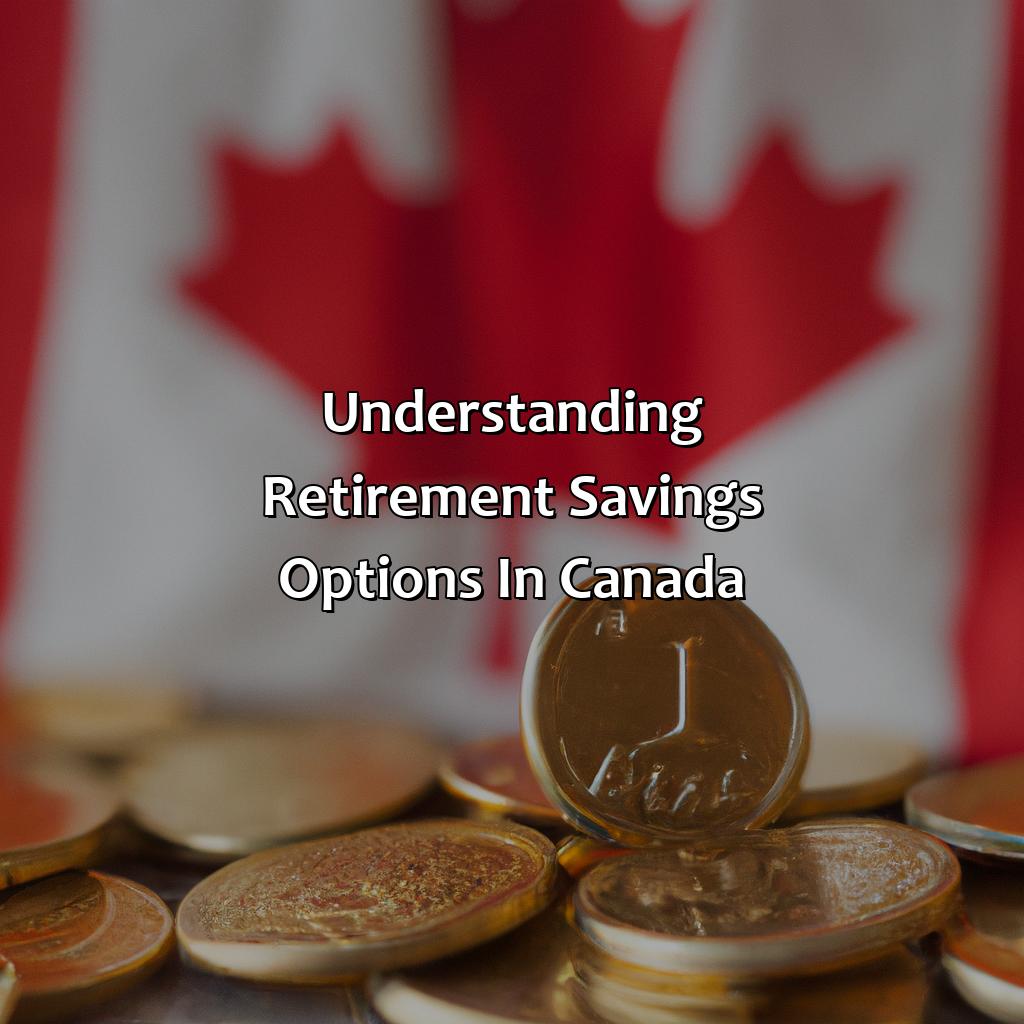
Image credits: retiregenz.com by Harry Jones
Registered Retirement Savings Plans (RRSPs)
One of the most popular ways to plan for retirement in Canada is by investing in an initiative known as tax-deferred investments. These are investment accounts that allow individuals to save a portion of their income while deferring taxation on those funds until they withdraw them later in life. One popular example of such tax-deferred investment accounts is the Registered Retirement Savings Plans (RRSPs).
RRSPs are individual investment accounts that help Canadians save for retirement on a pre-tax basis. That is, when contributing funds into an RRSP account, individuals can write off those contributions from their taxable income and benefit from immediate tax savings. Moreover, RRSPs investments grow tax-free until the account holder withdraws the funds at or after the age of 71.
It can be challenging to determine how much money needs to be saved over time. To know more about it, Financial Advisors could assist with making rough estimates that suit people’s financial conditions.
Canada Revenue Agency (CRA) introduced RRSPs back in 1957 as part of its efforts to encourage Canadians to save for their golden years. Since then, numerous modifications have been made as more people adopt this approach and ensure a financially secure future for themselves.
Saving for retirement is like playing hide-and-seek with your money, but with TFSAs, you’ll always come out a winner.
Tax-Free Savings Accounts (TFSAs)
Investing in a tax-free savings vehicle is an excellent way to prepare for retirement. TFSAs allow individuals to save and grow their money tax-free, making them an attractive option for Canadians.
TFSAs provide flexibility when it comes to investment options, including stocks, bonds, mutual funds and more. This enables account holders to invest in the assets they feel confident about while still having the benefits of tax-free growth.
One unique benefit of TFSAs is that unused contribution room can be carried forward indefinitely. Unlike RRSPs, there is no withdrawal requirement or penalty for not using the contribution room in any given year.
According to a report by Statistics Canada, 41% of Canadian households aged 55 and older held TFSAs as of 2019.
Who needs a personal pension when you can just hitch a ride on your employer’s RPP gravy train?
Registered Pension Plans (RPPs)
Retirement savings plans that are registered with Canadian government are among the much-preferred options Canadians opt for called employer-sponsored Registered Pension Plans (RPPs). RRP gives an opportunity to employees of all ages and backgrounds to save on taxes while safeguarding their retirement.
A Registered Pension Plan is classified into 2 types- Defined Benefit Plan and Defined Contribution Plan. The defined benefit plan offers a guaranteed income payment in retirement, while a Defined Contribution plan only guarantees a level of contribution invested. The employer bears the investment risk in a Defined Benefit Plan, whereas the employee bears it in a Defined Contribution plan.
When you invest in RPPs, your contribution amount is tax-deductible, which majorly benefits high-income earners as they can additionally reduce their tax bracket. There are predetermined rules around contributory levels; however, they generally permit higher contributions than some other individual contribution tax arrangements.
Pro Tip: Determine which type of RPPs suits you best based on your employment status/employer’s offerings and create a plan accordingly.
The only thing more satisfying than maximizing your retirement savings is imagining the look on your grandkids’ faces when you tell them you can afford to spoil them rotten.
How to Maximize Retirement Savings
Maximize retirement savings with budgeting, investing, and employer matching! Prepare for the future! Explore benefits of budgeting, investing, and employer matching programs. Learn tips in the “How to Plan for Retirement in Canada?” article. Ensure a comfy retirement!
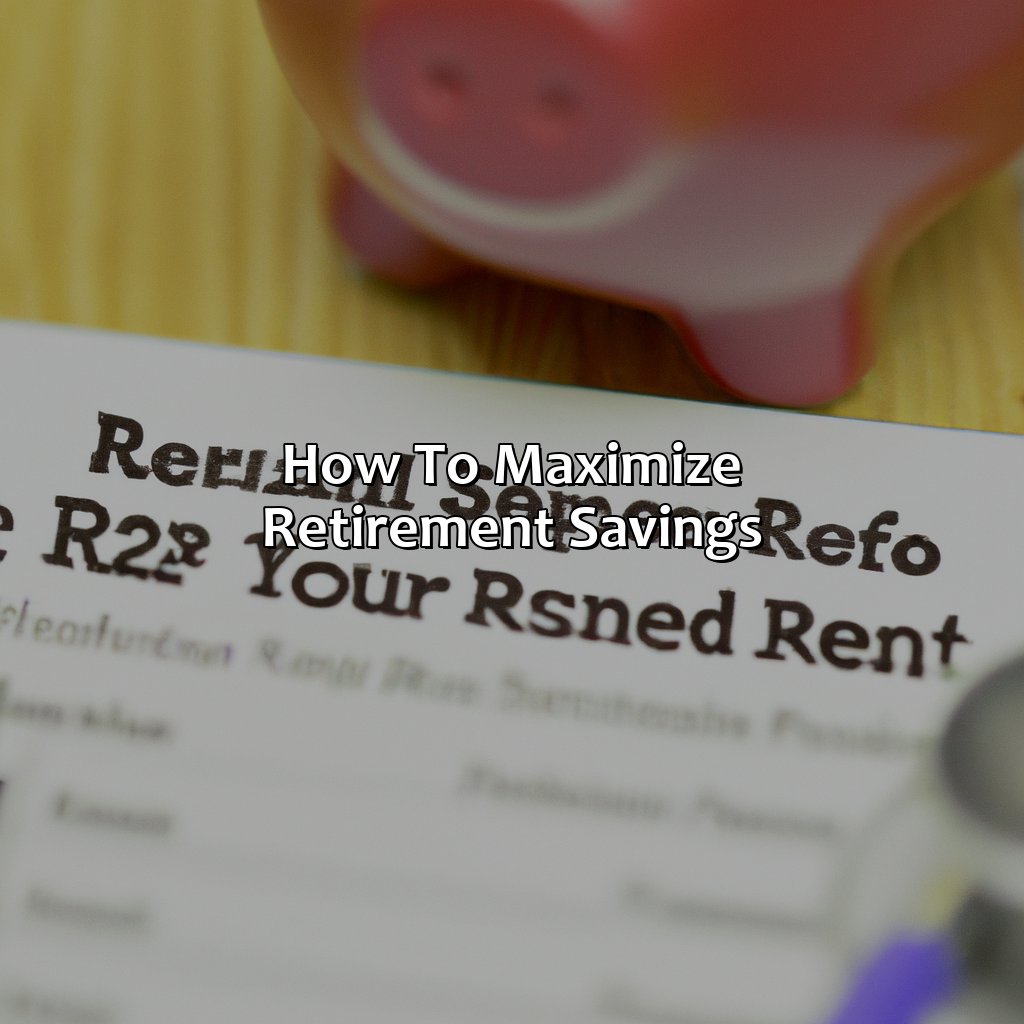
Image credits: retiregenz.com by James Arnold
Budgeting for Retirement
Planning for Retirement Expenditures
Plan your retirement budget meticulously to ensure financial stability and independence. Review present expenditures, including utility bills, insurance premiums, and groceries, and cut back expenses where possible. Ascertain the future cost of medical care, transportation costs, housing accommodation, and lifestyle objectives accurately.
Diversify your financial investments to balance risk and reward. Maximize contributions to Registered Retirement Savings Plan (RRSP), employer pension plans or Tax-Free Savings Accounts (TFSA). Seek advice from a Certified Financial Planner (CFP) to create a retirement fund suitable for you.
To maximize savings consider developing multiple income streams in retirement such as downsizing property, rental income or investing in dividend-paying stocks. Having additional sources of revenue can minimize reliance on savings reserves.
Pro Tip: Consider starting your retirement planning process early on in life as this may aid in building up sufficient funding before retiring.
Start planning for retirement now, because if you wait too long, you’ll only have enough savings to buy a faint memory of your dream retirement.
Investing for Retirement
Preparing to Retire: Tips on How to Invest for your Future
The road to a financially secure retirement starts by strategically building an investment portfolio. Investing for Retirement involves building a diverse set of investments and opting for tax-efficient plans like RRSPs or TFSAs. With consistent contributions through automatic payment methods, individuals can attain long-term investment growth, better than inflation rates, without much attention.
A well-diversified portfolio balances the inherent risk involved in investments with the goal of maximizing returns while minimizing losses. An active approach is key to meeting personal financial goals and modifying investments over time as financial needs change. Using simple tools such as budget tracking apps can also aid in adjusting monthly contributions sooner than later.
Ensuring that one’s savings are on track require calculated projections on how much money will be needed during retirement years. This projection considers factors such as life expectancy, market fluctuations, unforeseen expenses and inflation rate. Allocating funds appropriately with the right balance between conservative and dynamic investment options provides future security against the unknown.
By planning ahead, you can maximize your retirement savings, start early and increase contributions regularly to achieve those golden years goals. Procrastination could affect interest earned income or end up saving less by changing course too late. Start today!
Nothing beats free money, except maybe free pizza, but your employer’s matching program for retirement savings comes pretty close.
Taking Advantage of Employer Matching Programs
Maximizing Retirement Savings through Employer Match Programs is a smart way to plan for retirement in Canada. Here are three ways to make the most of your employer-matching program:
- Contribute as Much as You Can Afford: To make sure you get the full benefit of your employer-matching program, aim to contribute the maximum percentage allowed.
- Start Contributing Early: Don’t wait until later in your career to start contributing. The earlier you begin, the more time your money has to grow and compound.
- Consider Investing More Aggressively: If you have many years before retirement and can withstand short-term volatility, investing more aggressively may help maximize your returns over time.
It’s worth noting that not all employer-matching programs are created equal. Some employers will match a portion of each paycheck automatically, while others may require that employees wait until they’ve been with the company for a certain period or meet other requirements.
Taking Advantage of Employer Matching Programs is an important part of planning for retirement, but it’s not the only thing you should do to prepare. Make sure you also have an emergency fund in place and consider working with a financial advisor to develop a comprehensive retirement plan.
Don’t miss out on the benefits of an employer-matching program by waiting too long or failing to contribute enough. Start taking advantage today and watch your savings grow!
Retirement in Canada: where the only guarantee is that the moose will still outnumber your income sources.
Retirement Income Sources in Canada
When planning for retirement income in Canada, bear in mind the options for a safe financial future. These include government benefits (CPP/OAS), company pensions, and personal savings. Each of these has its own advantages and consequences. So, it’s important to look into them closely.
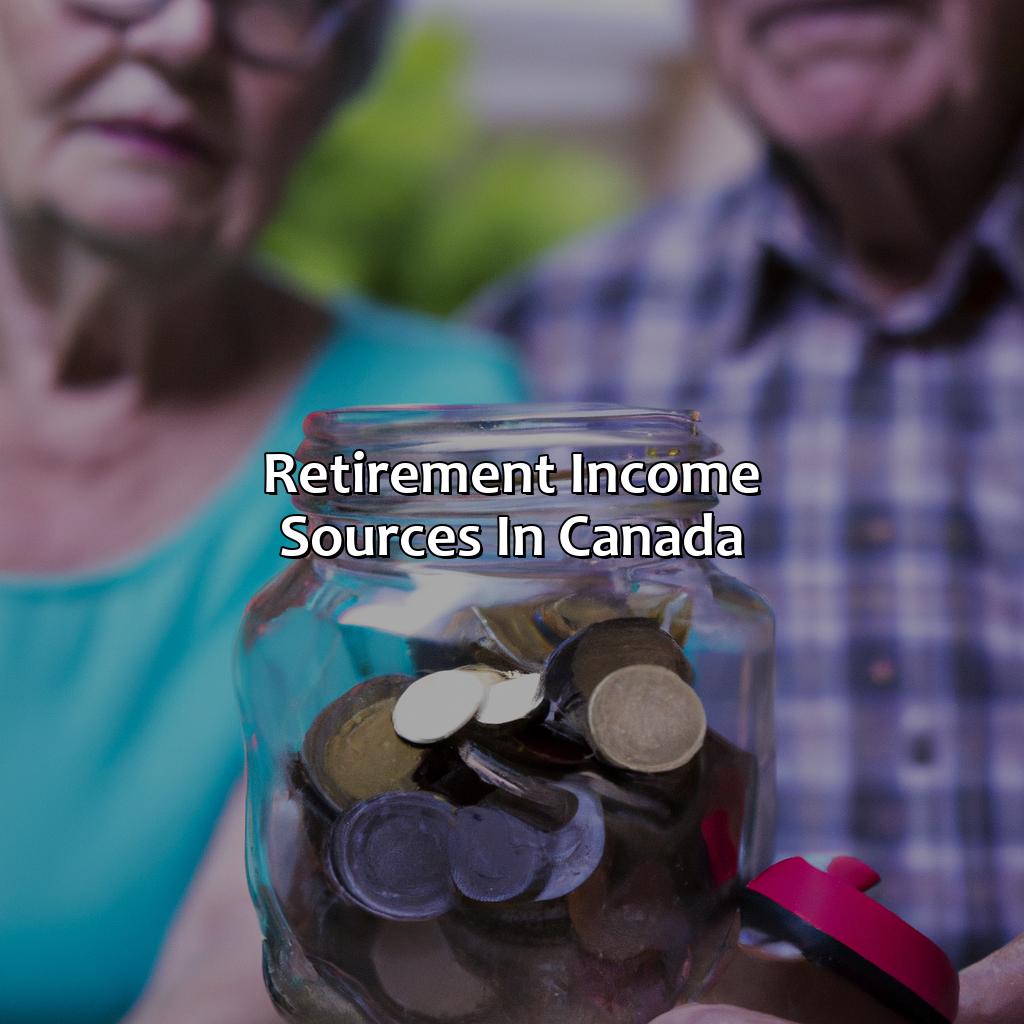
Image credits: retiregenz.com by Harry Woodhock
Government Benefits (CPP/OAS)
Canada Pension Plan (CPP) and Old Age Security (OAS) are reliable sources of government benefits for Canadians during their retirement years.
- – CPP provides a monthly payment to individuals who have made contributions to the plan during their working years.
- – OAS is a pension program that provides a basic monthly income to seniors who are 65 or older.
- – Eligible individuals may also receive additional benefits such as the Guaranteed Income Supplement (GIS) and the Allowance.
Moreover, both CPP and OAS are indexed to inflation annually, ensuring that retirees can keep up with rising living costs.
A true fact: According to Statistics Canada, in 2019 over 90% of seniors received some form of Old Age Security benefit.
Company pensions – because nothing says old and retired like relying on your former employer for income.
Company Pensions
As a key element of retirement planning, Employer-Sponsored Retirement Savings Plans provide an opportunity to accumulate significant savings over time. By making regular contributions to company pensions, employees can take advantage of employer contributions, tax-deferred savings, and the power of compound interest. These plans come in several types, including defined benefit plans and defined contribution plans.
Defined benefit plans guarantee a specific retirement benefit based on factors like salary history and length of service. Meanwhile, Defined contribution plans enable employees to contribute a portion of their salaries into the plan on a pre-tax basis and typically consist of 401(k) or 403(b) accounts.
Furthermore, employer-sponsored retirement savings plans generate considerable social and economic benefits by promoting financial security for retirees while also cutting reliance on government income support programs.
In a landmark ruling in the case McCormick v. AT&T Communications Inc., the Supreme Court ruled that companies may not discriminate against older workers in dealing with retiree benefits, thereby establishing strong safeguards for pension rights.
You can’t spell retirement without ‘tire’, which is also what you’ll need to change during retirement if you didn’t save enough.
Personal Savings
Planning and building your personal wealth can be a vital source of retirement income. Your ‘Individual Investment Account’ (IIA) can help you accumulate assets over time. Self-Directed Registered Retirement Savings Plans (SDRRSPs) are another option that allows you to invest your savings in a variety of investments, such as stocks, bonds, mutual funds, and Exchange Traded Funds (ETFs). Remember to ensure that your portfolio is diversified and balanced based on your risk tolerance.
Moreover, contributing to a TFSA from an early age can complement the amount saved in an IIA or SDRRSP. A Tax-Free Savings Account (TFSA) lets you deposit and withdraw money tax-free throughout your lifetime. While withdrawals aren’t tax-deductible, they won’t impact government benefits like the Old Age Security payments or other tax credits.
You should also consider creating an emergency fund that covers at least six months of living expenses beforehand. In the event of an unexpected expense or job loss, being able to rely on what’s already been saved instead of other sources of funding could prevent you from dipping into long-term savings accounts.
In the past decade, Canadians have increasingly started relying more on personal savings as part of their overall retirement strategy. A recent survey shows 32% plan on using RRSPs as their primary source. As such, it’s important to prioritize savings plans that suit individual financial goals while factoring in diversification and risk-management principles to build towards a comfortable retirement lifestyle for yourself.
Planning for retirement is like planting a money tree, except you can’t water it with hopes and dreams.
The Importance of Financial Planning for Retirement
Highlight the significance of financial planning for retirement in Canada! Working with a financial advisor offers personal advice and expertise. Regularly evaluating and revising your retirement plans helps keep them in line with your targets and finances. Don’t overlook it; it’s worth it!
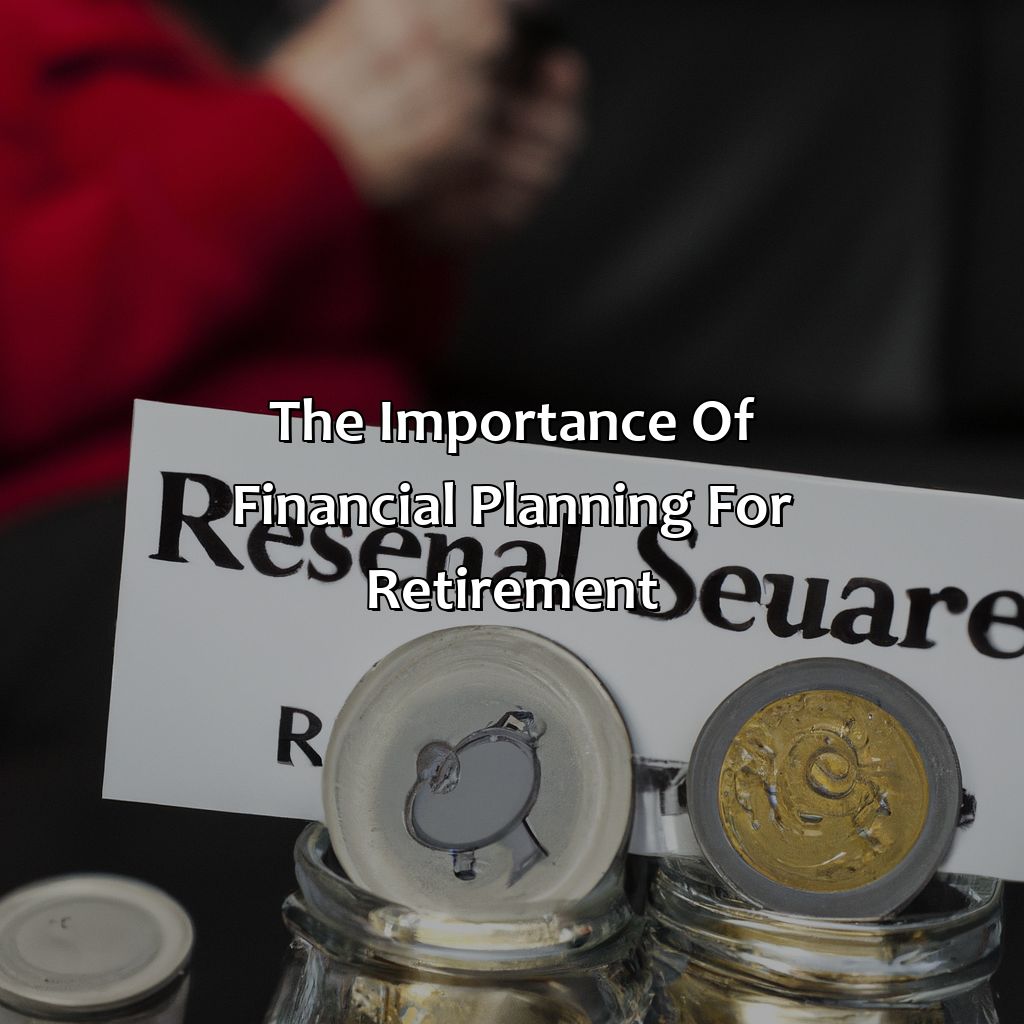
Image credits: retiregenz.com by Yuval Jones
Working with a Financial Advisor
Collaborating with a Financial Consultant can be extremely helpful in devising personalized plans for retirement. Consulting a qualified advisor can assist you in determining appropriate investment strategies, understanding tax implications, and uncovering blind spots in preparation for future financing. Working collaboratively with such an expert can lead to effective and efficient results.
Your financial advisor could help you arrange funds, gauge your risk tolerance and give insightful advice on assets that would be good fit for your retirement income goals. In addition, they may advise on pensions, real estate, or insurance policies that will contribute added stability to your savings plan. Collaborating alongside them provides clarity while helping enhance overall financial security.
Working with an expert not only exemplifies the power of collaboration but also how experience makes a difference over self-planning. My Uncle set out his own finances without an adviser’s help and lost much of his retirement savings as a result of miscalculations made without guidance. Professional assistance is certainly worthwhile through information analysis to avoid making audacious decisions or mistakes.
You know you’re getting old when your retirement plans consist of hoping your kids will take care of you.
Regularly Reviewing and Adjusting Retirement Plans
Regularly reviewing and adjusting your retirement plans ensures a secure future. It is essential to stay updated with your financial goals and requirements to prepare for the retirement phase. Plan adjustments must take place based on changes to lifestyle, personal circumstances, or inflation rates.
- Revisit Your Retirement Goals: Assess if they are still relevant and efficient as per current parameters.
- Assess Your Financial Situation: Calculate net worth, debts-income ratio, and the status of financial accounts.
- Revise Investment Strategy: Adjust your investment portfolio using investment tools that aligns with your revised retirement goals.
Reviewing retirement plans should include devising an ideal budget that takes into account personal expenses and available income sources. Anticipating significant financial events such as buying a property or receiving a pension is also crucial.
Maintaining momentum in your long-term plan requires continuous action. Neglecting review meetings may mean not maximizing investment opportunities or making the most of tax breaks. Regular adjustment allows ample time to make investments that generate higher returns.
Planning for the great beyond might seem morbid, but estate planning is just another way of saying ‘I love you’ to your family.
Estate Planning in Retirement
For a peaceful retirement, Estate Planning is a must. To do this, you must Create a Will, Establish Powers of Attorney, and make Health Care Directives. Knowing how to do this will help you manage your assets and affairs in case of something unexpected happening. You’ll be ready to handle things smoothly and securely.
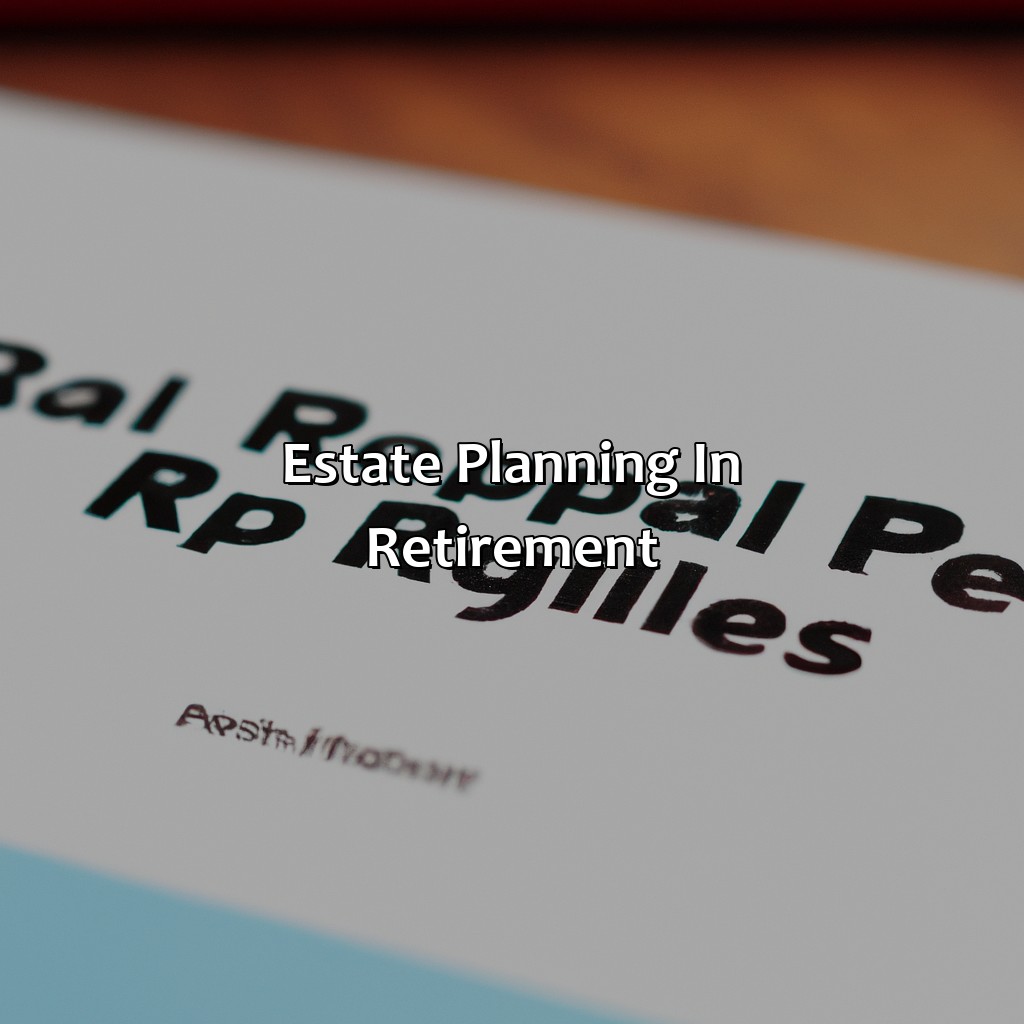
Image credits: retiregenz.com by Harry Woodhock
Creating a Will
A Bequest Plan
Creating a bequest plan can seem intimidating, but it’s essential to ensure your assets are distributed as per your wishes after you pass away. Here’s a six-step guide for creating a bequest plan.
- Start by making an inventory of your assets and liabilities.
- Designate beneficiaries for each asset in case of untimely death.
- Select an executor who will distribute your assets and pay off debts according to your wishes.
- Work with an estate planning attorney to draft a will, power of attorney, healthcare proxy, and living will.
- Ensure appropriate witnesses validate the documents executed correctly according to state law.
- Regularly review and update your bequest plan as required by changes in life circumstances or financial status.
It’s crucial to consider unique aspects such as tax-planning strategies or structuring trusts to manage any contingent situations.
Recently, Stan Lee, the creator of Marvel comics, passed away. However, he drafted his bequest plan decades before he died—allocating royalties for family members and charities while preserving rights over creativity towards his brand.
When it comes to laying out your future healthcare wishes, make sure you have a power of attorney who doesn’t flinch at the sight of blood.
Establishing Powers of Attorney and Health Care Directives
Planning for potential incapacity is crucial in retirement. This includes establishing legal documents that designate Powers of Attorney and Health Care Directives. These empower trusted individuals to make important financial and medical decisions on your behalf if you become incapacitated.
To establish these legal documents, seek the advice of a lawyer who specializes in estate planning. They can provide guidance on selecting responsible individuals to carry out your wishes. Keep these documents up-to-date to reflect any changes in your circumstances or preferences.
It is important to note that a Power of Attorney only applies while you are alive, but a Will applies after death. Ensure both are in place for full protection when necessary.
Pro Tip: It’s important to discuss your wishes with the designated individuals beforehand so they understand your priorities and values when it comes time to make decisions on your behalf.
Some Facts About How to Plan for Retirement in Canada:
- ✅ Canadians can collect Canada Pension Plan (CPP) as early as age 60, but delaying until age 70 can result in a higher benefit. (Source: Government of Canada)
- ✅ Registered Retirement Savings Plans (RRSPs) and Tax-Free Savings Accounts (TFSAs) are popular retirement savings options in Canada. (Source: The Balance)
- ✅ Seniors who own their own home can consider options such as a reverse mortgage to access the equity in their home. (Source: Government of Canada)
- ✅ Canadians may also have access to workplace pension plans and other retirement benefits through their employer. (Source: Government of Canada)
- ✅ It is important to consider factors such as inflation, healthcare costs, and life expectancy when planning for retirement. (Source: CIBC)
FAQs about How To Plan For Retirement In Canada?
What is retirement planning, and why is it important in Canada?
Retirement planning involves the formulation and implementation of a strategy to achieve financial independence after one’s working years. It entails saving for one’s future by investing in various assets like stocks, bonds, mutual funds, and real estate, among others, to be able to cover the costs of daily living expenses, medical expenses, and any other costs individuals may incur after retirement. It is important in Canada because Canada’s publicly funded retirement system, Old Age Security (OAS), and the Canada Pension Plan (CPP) do not cover all expenses.
How do I start planning for retirement in Canada?
The first step in starting a retirement plan is assessing one’s current financial situation, including expenses and income. Once this is done, one should set a retirement goal, including the estimated required income and the expected retirement age. The next step is to determine the appropriate retirement savings vehicle based on the individual’s risk tolerance, goals, and the amount of time they have to invest. These may include a Registered Retirement Savings Plan (RRSP), Tax-Free Savings Account (TFSA), or other investment accounts.
What is a Registered Retirement Savings Plan, and how can it help me save for retirement in Canada?
A Registered Retirement Savings Plan (RRSP) is an investment account that enables Canadian citizens and residents to save money for retirement. Contributions to the account are tax-deductible, and the funds grow tax-free until they are withdrawn. RRSPs can reduce an individual’s current-year tax bills, which means that tax savings can be reinvested in the RRSP account, leading to compound interest growth that can be considerable over time.
What is the Canada Pension Plan, and how does it work?
The Canada Pension Plan (CPP) is a government-funded program that provides a monthly payment to Canadian residents who have reached retirement age. Eligibility is based on a combination of age, retirement income, and financial contributions. Employers and employees contribute to the CPP, and the amount of the pension payment is based on a percentage of the individual’s average lifetime earnings up to the maximum pensionable earnings limit.
What is the best way to maximize my retirement savings?
To maximize retirement savings, individuals should start saving as early as possible and try to contribute the maximum amount allowable annually to their chosen retirement savings accounts. It is also essential to diversify one’s investments to spread risk. Keeping an eye on expenses and minimizing them whenever possible will also maximize retirement savings.
When should I start planning for retirement in Canada?
Starting early is the best time to plan for retirement, regardless of one’s age. The earlier an individual starts saving, the more time they will have to accumulate wealth and benefit from compounding interest. However, even if an individual is close to retirement or in retirement, they can still benefit from effective retirement planning. It’s never too late to plan for retirement.








